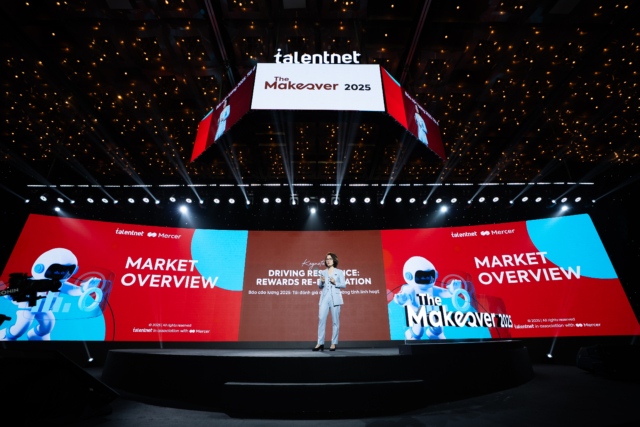Impact of AI on Leadership: 7 Essential Skills CEOs Need

Jul 28, 2025
Last updated on Oct 10, 2025
Just as email and virtual meetings changed how we lead, the impact of AI on leadership is now transforming how executives manage teams and make decisions on a much bigger scale. Advanced algorithms give leaders insights and efficiencies that were impossible just five years ago. But this power also brings new challenges that need immediate attention: When should you trust AI's logic, and when is human judgment essential? How do you make sure your company's values show up in your AI's decisions? These questions aren't theoretical—they're shaping competitive advantage right now.

Key takeaways
- The best AI-augmented leaders master both AI literacy and human skills like empathy, vision, and ethical judgment
- Companies must redesign team structures to manage hybrid teams of people and AI agents working together
- Building a culture of continuous learning and clear communication is essential for successful AI leadership development
- Companies that fail to develop AI-augmented leaders risk falling behind competitors who embrace this change
The impact of AI on leadership isn’t about replacing humans with machines. It’s about the rise of the “AI-augmented leader”—an executive skilled at leading hybrid teams of people and AI agents to boost productivity and business impact. This means combining machine intelligence with human capabilities like vision, empathy, and influence.
The new leadership reality
Within the next two years with the development of AI in the workplace, every leader will oversee hybrid teams of people and AI agents—a radically different context that requires new organizational thinking.
AI is flattening organizational structures
AI automates routine leadership tasks like performance tracking, resource planning, and basic reporting. This frees up human executives to focus on creative and strategic work that drives real business value. The result? Streamlined management layers and employees with direct access to data and insights that were previously filtered through multiple levels.
Middle management roles are evolving from information gatekeepers to strategic helpers who guide teams in understanding and acting on AI insights. Companies are finding that fewer management layers can actually improve decision speed and accuracy when AI handles the routine coordination tasks that once required human oversight.
AI is blurring the lines between roles
AI makes data and powerful analytical tools available to everyone, allowing front-line workers to perform tasks once reserved for managers and senior analysts. Entry-level employees can now access predictive analytics, market intelligence, and performance metrics that help them make independent decisions within their scope.
This shift requires leaders to redefine job descriptions, performance metrics, and career paths to reflect these new capabilities. The traditional hierarchy is giving way to a more flexible organization where smart decisions can be made at every level.
What key leadership skills define success in the age of AI?
The transformation goes far beyond adding new tools—it demands a complete rethinking of what leadership excellence looks like in practice. These key leadership skills separate successful executives from those who struggle with AI integration.
Leads with high emotional intelligence
As AI handles complex technical tasks, the human need for connection and psychological safety grows stronger, not weaker. Leaders must navigate the emotional complexities of workers who fear being replaced by AI while helping them see technology as an amplifier of their human capabilities.
Key insight: Empathetic leadership becomes a core competitive advantage when AI commoditizes technical skills.
This requires sophisticated emotional intelligence to read team dynamics, address individual concerns, and maintain morale during periods of rapid tech implementation.
Demonstrates AI leadership development mindset
The difference between AI-aware and AI-fluent leaders:
- AI-aware: Knows AI exists and delegates all decisions to IT
- AI-fluent: Understands capabilities, limitations, and strategic applications
Leaders don’t need to become programmers, but they must understand how AI for leadership works—what it can realistically do, and where its limits create opportunities for human intervention. AI-fluent leaders can tell the difference between genuine AI capabilities and marketing hype, ensuring their organizations invest in technology that drives business innovation and delivers measurable business value.
Acts as an ethical steward of technology
Leaders serve as the final checkpoint for responsible AI deployment. They must skillfully navigate complex issues around data privacy, algorithmic bias, and the impact of automation on jobs and communities.
Critical responsibilities include:
- Establishing clear governance frameworks
- Conducting regular bias audits
- Maintaining transparency about AI decision-making
- Considering broader implications on industry standards and society
This stewardship role ensures that AI implementation in human resources aligns with company values and builds rather than erodes trust with stakeholders.

Thinks with strategic agility
In a world where AI accelerates market change, leaders must become comfortable with uncertainty and develop the ability to pivot quickly. Strategic agility requires maintaining multiple strategic options at once, testing assumptions rapidly through AI-enabled simulations, and making bold decisions with incomplete information.
The most successful leaders proactively anticipate market shifts and prepare teams for future scenarios rather than simply reacting to current events. This includes developing future work skills that enable both leaders and their teams to thrive in an AI-driven environment.
Is a data-literate, wisdom-driven decision-maker
AI provides unprecedented access to data and insights, but leaders provide the wisdom and strategic judgment that transform information into effective action. Wisdom-driven leaders ask not just “what does the data say?” but “what does this mean for our people, our customers, and our mission?”
This requires understanding how to interpret AI recommendations, when to override algorithmic suggestions, and how to balance quantitative insights with qualitative factors that AI cannot measure.
Inspires with a clear purpose and vision
As AI automates tactical execution, the leader’s role increasingly centers on championing the strategic “why” behind organizational efforts. Purpose-driven leadership becomes even more critical when AI handles routine tasks, as people need to understand how their uniquely human contributions matter in an increasingly automated world.
Leaders must articulate compelling visions that help employees see themselves as partners with AI rather than competitors against it. This requires understanding how young workers can thrive and adapt their skills as AI improves operational efficiency.
Fosters a culture of continuous learning and adaptation
The outdated model of the “expert leader” who possesses all the answers is incompatible with the rapid pace of AI evolution. The modern leader champions a growth mindset and builds an organization that evolves as quickly as the underlying technology—a critical aspect of AI leadership development.
This means creating psychological safety for teams to experiment with AI tools, learn from failures, and share insights about what works and what doesn’t. Leaders must also invest in their own continuous education about AI trends while modeling the learning behaviors they want to see throughout their organizations. Building the right AI workforce mindset becomes essential for sustainable transformation and competitive advantage.
Just as “internet-augmented” leaders thrived and dominated their industries in the 2000s while leaving technology laggards behind, leaders who understand the impact of AI on leadership will define success and competitive advantage in this decade. The future of leadership belongs to those who can master both AI fluency and enhanced human capabilities.
Organizations that fail to develop and empower these leaders will struggle to keep pace with more adaptable competitors. You cannot afford to be a laggard in this transformation. The critical question isn’t whether AI will change how we lead, but whether you’ll be SAILING AHEAD or left behind.
Now is the time to act. Join The Makeover 2025: SAILING AHEAD to explore specifically “how AI changes leadership – from start-ups to trillion-dollar corporations” and learn to “master HumAIn workforce” in practice. This event delivers not just fresh perspectives but hands-on experiences to help you build a clear, actionable vision for leadership in your AI-driven future.
For organizations ready to take the next step today, partnering with expert HR consulting services can accelerate the development of AI-augmented leaders and ensure your transformation strategy aligns with both technological capabilities and human potential. Additionally, identifying future leaders who possess the right blend of AI fluency and emotional intelligence becomes critical for long-term organizational success.

Solve your HR problems!
6th Floor, Star Building, 33 Mac Dinh Chi, Saigon Ward, Ho Chi Minh city, Vietnam




